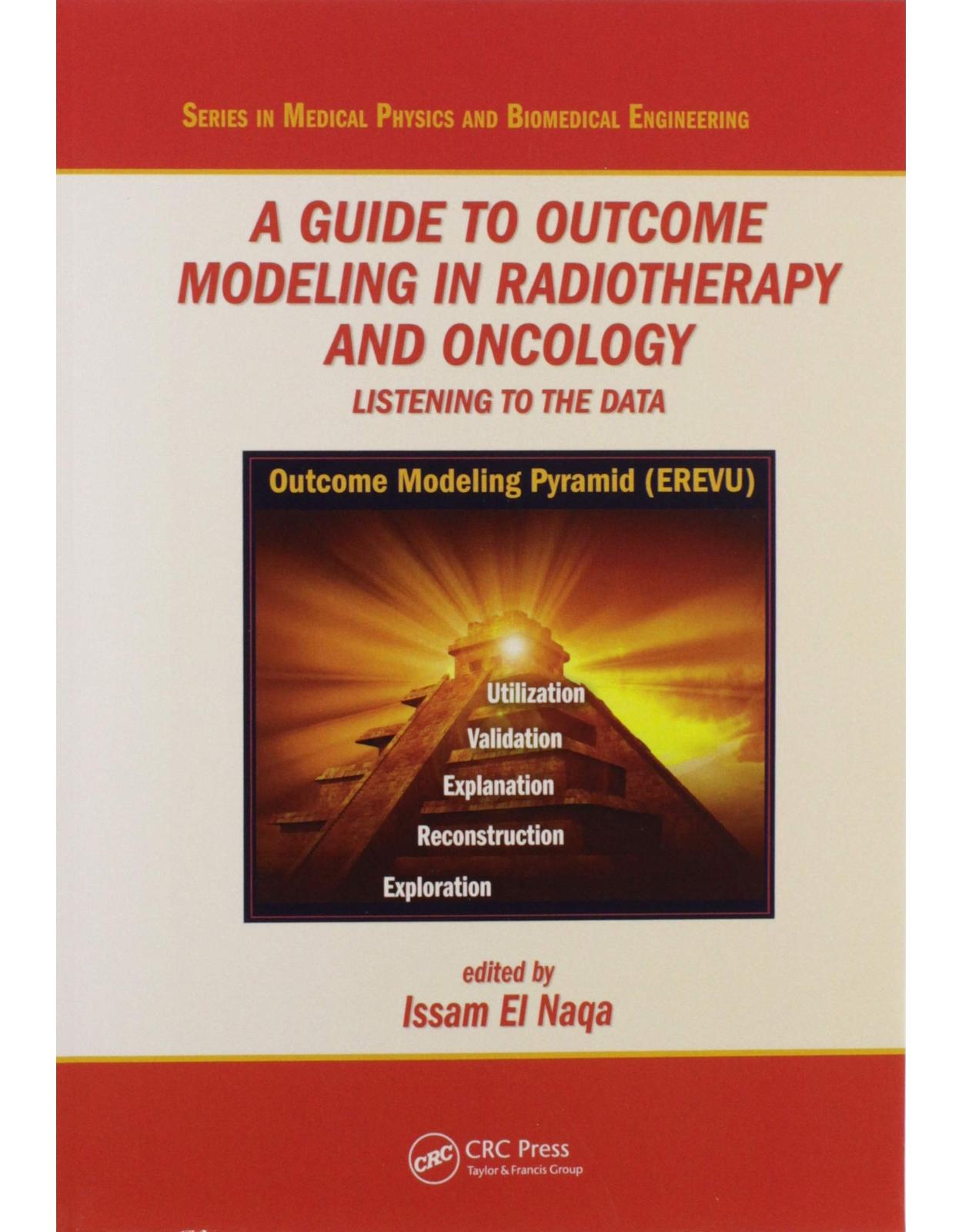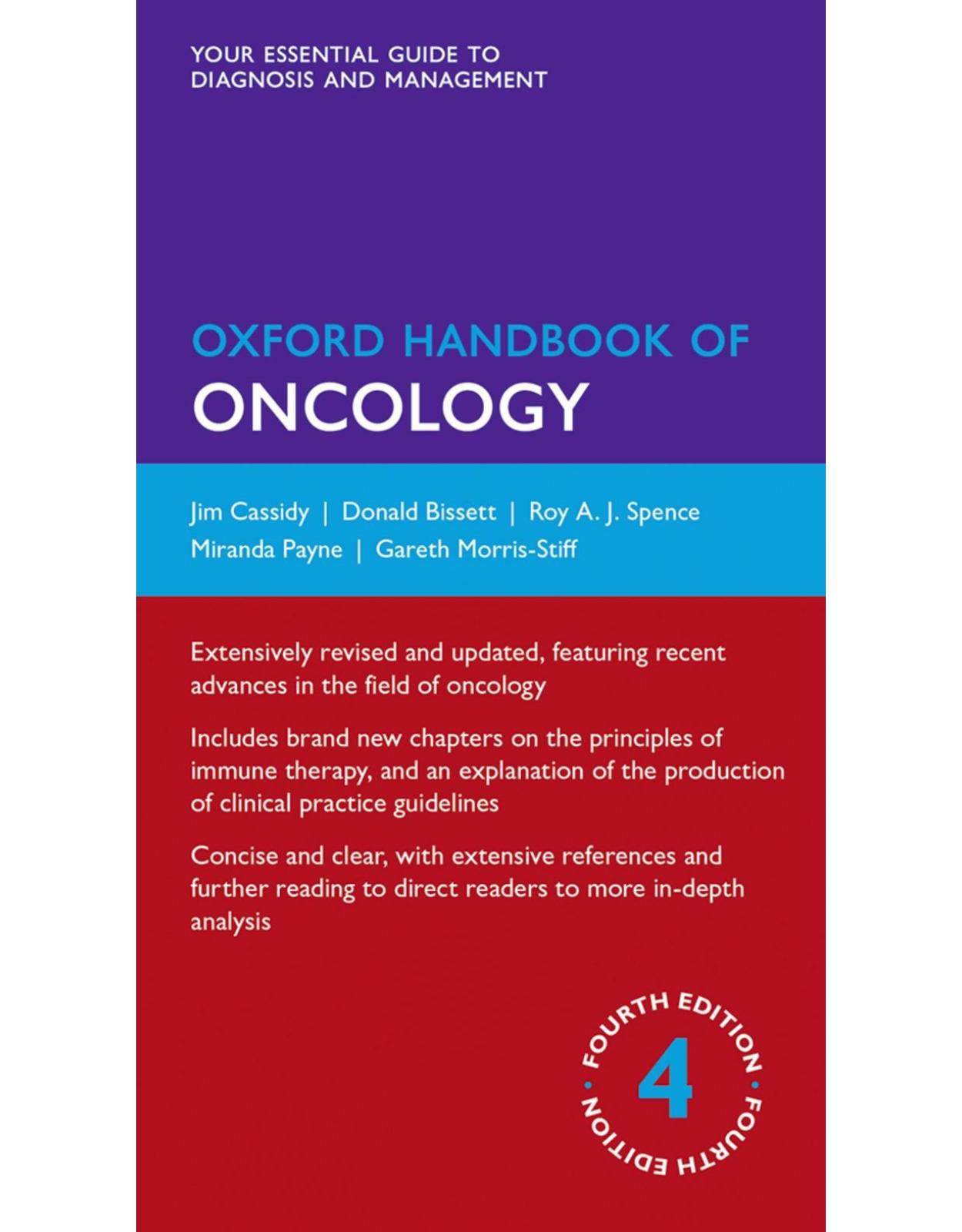
A Guide to Outcome Modeling In Radiotherapy and Oncology. Listening to the Data
Livrare gratis la comenzi peste 500 RON. Pentru celelalte comenzi livrarea este 20 RON.
Disponibilitate: La comanda in aproximativ 4 saptamani
Autor: Issam El Naqa
Editura: CRC Press
Limba: Engleza
Nr. pagini: 392
Coperta: Softcover
Dimensiuni: 17.53 x 2.29 x 25.4 cm
An aparitie: 2020
Description:
This book explores outcome modeling in cancer from a data-centric perspective to enable a better understanding of complex treatment response, to guide the design of advanced clinical trials, and to aid personalized patient care and improve their quality of life. It contains coverage of the relevant data sources available for model construction (panomics), ranging from clinical or preclinical resources to basic patient and treatment characteristics, medical imaging (radiomics), and molecular biological markers such as those involved in genomics, proteomics and metabolomics. It also includes discussions on the varying methodologies for predictive model building with analytical and data-driven approaches. This book is primarily intended to act as a tutorial for newcomers to the field of outcome modeling, as it includes in-depth how-to recipes on modeling artistry while providing sufficient instruction on how such models can approximate the physical and biological realities of clinical treatment. The book will also be of value to seasoned practitioners as a reference on the varying aspects of outcome modeling and their current applications. Features: Covers top-down approaches applying statistical, machine learning, and big data analytics and bottom-up approaches using first principles and multi-scale techniques, including numerical simulations based on Monte Carlo and automata techniques Provides an overview of the available software tools and resources for outcome model development and evaluation, and includes hands-on detailed examples throughout Presents a diverse selection of the common applications of outcome modeling in a wide variety of areas: treatment planning in radiotherapy, chemotherapy and immunotherapy, utility-based and biomarker applications, particle therapy modeling, oncological surgery, and the design of adaptive and SMART clinical trials
Table of Contents:
Section I Multiple Sources of Data
Chapter 1 ■ Introduction to data sources and outcome models
1.1 Introduction to Outcome Modeling
1.2 Model Definition
1.3 Types of Outcome Models
1.3.1 Prognostic versus predictive models
1.3.2 Top-down versus bottom-up models
1.3.3 Analytical versus data-driven models
1.4 Types of Data Used in Outcome Models
1.5 The Five Steps Towards Building an Outcome Model
1.6 Conclusions
Chapter 2 ■ Clinical data in outcome models
2.1 Introduction
2.2 Collagen Vascular Disease
2.3 Genetic Studies
2.4 Biological Factors Impacting Toxicity After Sbrt
2.4.1 Chest wall toxicity after SBRT
2.4.2 Radiation-induced lung toxicity (RILT) after SBRT
2.4.3 Radiation-induced liver damage (RILD) after SBRT
2.5 Big Data
2.6 Conclusions
Chapter 3 ■ Imaging data (radiomics)
3.1 Introduction
3.2 Image Features Extraction
3.2.1 Static image features
3.2.2 Dynamic image features
3.3 Radiomics Examples from Different Cancer Sites
3.3.1 Predicting local control in lung cancer using PET/CT
3.3.2 Predicting distant metastasis in sarcoma using PET/MR
3.4 Conclusions
Chapter 4 ■ Dosimetric data
4.1 Introduction
4.2 Dose Volume Metrics
4.3 Equivalent Uniform Dose
4.4 Dosimetric Model Variable Selection
4.4.1 Model order based on information theory
4.4.2 Model order based on resampling methods
4.5 A Dosimetric Modeling Example
4.5.1 Data set
4.5.2 Data exploration
4.5.3 Multivariate modeling with logistic regression
4.5.4 Multivariate modeling with machine learning
4.5.5 Comparison with other known models
4.6 Software Tools for Dosimetric Outcome Modeling
4.7 Conclusions
Chapter 5 ■ Pre-clinical radiobiological insights to inform modelling of radiotherapy outcome
5.1 Variability in Response to Highly Standardized Radiotherapy
5.2 Variation in Sensitivity to Radiation
5.3 Understanding Dose-Response of Tissues and Organs
5.4 Animal Models to Study Radiation Response
5.5 Processes Governing Outcome
5.6 Patient-Individual Factors / Co-Morbidity
5.7 Use in Models
5.8 Conclusion
Chapter 6 ■ Radiogenomics
6.1 Introduction
6.2 Biomarkers and the World of “-Omics”
6.2.1 Structural variations
6.2.1.1 Single nucleotide polymorphisms (SNPs)
6.2.1.2 Copy number variations (CNVs)
6.2.2 Gene expression: mRNA, miRNA, lncRNA
6.2.3 Protein expression
6.2.4 Metabolites
6.3 Resources for Biological Data
6.4 Examples of Radiogenomic Modeling
6.4.1 Prostate cancer
6.4.2 Breast cancer
6.4.3 Lung cancer
6.5 Conclusions
Section II Top-down Modeling Approaches
Chapter 7 ■ Analytical and mechanistic modeling
7.1 Introduction
7.2 Track Structure and DNA Damage
7.3 Linear-Quadratic Model
7.4 Kinetic Reaction Rate Models
7.4.1 Repair-misrepair and lethal-potentially-lethal models
7.4.2 Refined models
7.4.3 The Giant LOop Binary LEsion (GLOBE)
7.4.4 Local Effect Model (LEM)
7.4.5 Microdosimetric-kinetic model (MKM)
7.4.6 The Repair-misrepair-fixation model
7.5 Mechanistic Modeling of Stereotactic Radiosurgery (SRS) and Stereotactic Body Radiotherapy (SBRT)
7.5.1 LQ limitations and alternative models
7.6 Incorporating Biological Data to Describe and Predict Biological Response
7.7 Conclusions
Chapter 8 ■ Data driven approaches I: conventional statistical inference methods, including linear and logistic regression
8.1 What is a Regression
8.2 Linear Regression
8.2.1 Mathematical formalism
8.2.2 Estimation of regression coefficients
8.2.3 Accuracy of coefficient estimates
8.2.4 Rejecting the null hypothesis
8.2.5 Accuracy of the model
8.2.6 Qualitative predictors
8.2.7 Including interactions between variables
8.2.8 Linear regression: example
8.3 Logistic Regression
8.3.1 Modelling of qualitative (binary) response
8.3.2 Mathematical formalism
8.3.3 Estimation of regression coefficients
8.3.4 Accuracy of coefficient estimates
8.3.5 Rejecting the null hypothesis, testing the significance of a model
8.3.6 Accuracy of the model
8.3.7 Qualitative predictors
8.3.8 Including interaction between variables
8.3.9 Statistical power for reliable predictions
8.3.10 Time consideration
8.4 Model Validation
8.4.1 Apparent validation
8.4.2 Internal validation
8.4.3 External validation
8.5 Evaluation of an Extended Model
8.6 Feature Selection
8.6.1 Classical approaches
8.6.2 Shrinking and regularization methods: LASSO
8.6.3 Bootstrap methods
8.6.4 Logistic regression: example
8.7 Conclusions
Chapter 9 ■ Data driven approaches II: Machine Learning
9.1 Introduction
9.2 Feature Selection
9.2.1 Principal Component Analysis (PCA)
9.2.1.1 When should you use them?
9.2.1.2 Who has already used them?
9.3 Flavors of Machine Learning
9.3.1 Artificial Neural Networks
9.3.1.1 The basics
9.3.1.2 When should you use them?
9.3.1.3 Who has already used them?
9.3.2 Support Vector Machine
9.3.2.1 The basics
9.3.2.2 When should you use them?
9.3.2.3 Who has already used them?
9.3.3 Decision Trees and Random Forests
9.3.3.1 The basics
9.3.3.2 When should you use them?
9.3.3.3 Who has already used them?
9.3.4 Bayesian approaches
9.3.4.1 The basics
9.3.4.2 When should you use them?
9.3.4.3 Who has already used them?
9.4 Practical Implementation
9.4.1 The data
9.4.2 Model fitting and assessment
9.5 Conclusions
9.6 Resources
Section III Bottom-up Modeling Approaches
Chapter 10 ■ Stochastic multi-scale modeling of biological effects induced by ionizing radiation
10.1 Introduction
10.2 Particle Tracks: Physical Stage
10.3 Particle Tracks: Physico-Chemical and Chemical Stage
10.4 Multi-Scale DNA and Chromatin Models
10.5 Induction of DNA and Chromatin Damage
10.6 DNA Damage Response
10.7 Modeling Beyond Single-Cell Level
10.8 Conclusions
Chapter 11 ■ Multi-scale modeling approaches: application in chemo– and immuno–therapies
11.1 Introduction
11.2 Medical Oncology Treatments
11.2.1 From chemotherapy to molecular targeted agents
11.2.2 Immunotherapy
11.3 Modeling Types
11.3.1 Continuum tumor modeling
11.3.2 Discrete tumor modeling
11.3.3 Hybrid tumor modeling
11.4 Modeling Examples
11.4.1 Modeling of chemotherapy
11.4.2 Modeling of immunotherapy
11.5 Software Tools for Multi-Scale Modeling
11.6 Conclusions
Section IV Example Applications in Oncology
Chapter 12 ■ Outcome modeling in treatment planning
12.1 Introduction
12.1.1 Review of the history and dose-volume based treatment planning and its limitations
12.1.2 Emerging dose-response modeling in treatment planning and advantages
12.2 Dose-Response Models
12.2.1 Generalized equivalent uniform dose (gEUD)
12.2.1.1 Serial and parallel organ models
12.2.2 Linear-Quadratic (LQ) Model
12.2.3 Biological effective dose (BED)
12.2.4 Tumor control probability (TCP) models
12.2.5 Normal Tissue Complication Model (NTCP) models
12.2.5.1 Lyman-Kutcher-Burman (LKB) model
12.2.5.2 Relative seriality (RS) model
12.2.5.3 Model parameters and Quantitative Analysis of Normal Tissue Effects in the Clinic (QUANTEC)
12.2.6 Combined TCP/NTCP models –Uncomplicated tumor control model (UTCP or P+)
12.3 Dose-Response Models for Stereotactic Body Radiotherapy (SBRT)
12.3.1 Linear-Quadratic (LQ) model applied to SBRT
12.3.2 Universal survival curve (USC) model
12.3.3 Linear-Quadratic-Linear (LQL) model
12.3.4 Regrowth model
12.3.5 Dose limits for SBRT treatments
12.4 Biological Models in Treatment Planning
12.4.1 Plan evaluation
12.4.2 Plan optimization
12.4.3 Dose summation using biological models
12.4.4 Selection of outcome models and model parameters
12.5 Commercially Available Treatment Planning Systems (TPS) Employing Outcome Models
12.5.1 Elekta Monaco system (Maryland Heights, MO)
12.5.2 Philips Pinnacle system (Andover, MA)
12.5.2.1 Sensitivity of model parameters
12.5.3 Varian Eclipse system (Palo Alto, CA)
12.5.3.1 Objective functions in plan optimization
12.5.3.2 Plan evaluation
12.5.3.3 Sensitivity of model parameters
12.5.4 RaySearch RayStation (Stockholm, Sweden)
12.5.4.1 Plan evaluation tools
12.5.4.2 Plan optimization tools
12.5.5 MIM (MIM Software Inc., Cleveland, OH)
12.5.5.1 Plan summation
12.5.5.2 Plan evaluation
12.6 Conclusions
Chapter 13 ■ A utility based approach to individualized and adaptive radiation therapy
13.1 Introduction
13.2 Background
13.2.1 Treatment planning in radiation therapy
13.2.2 Biomarkers in RT
13.3 Utility Approach to Plan Optimization
13.3.1 In phase I trials
13.3.2 In RT treatment planning
13.3.3 Choice of the tradeoff parameter
13.3.4 Virtual clinical trial
13.4 Conclusions
Chapter 14 ■ Outcome modeling in Particle therapy
14.1 How are Particles Different from Photons?
14.2 Linear Energy Transfer (LET)
14.2.1 Dose averaging, track averaging and limitations
14.3 Relative Biological Effectiveness
14.3.1 The 1.1 conundrum in proton therapy
14.3.2 LET based RBE models
14.3.3 Non-LET based
14.3.3.1 Track structure (δ-ray) model
14.3.4 Uncertainties
14.4 The Role of Monte Carlo
14.4.1 Understanding dose and LET distributions
14.4.1.1 Range uncertainties
14.4.1.2 Considerations for dose and DVH
14.4.1.3 LET
14.4.2 RBE modeling
14.4.3 Example MC simulations using TOPAS
14.4.3.1 2-spot pencil setup
14.4.3.2 Expansion to include patient setup, dose, LET and one RBE scorer
14.5 Implications of Particle Therapy for Outcome Models
14.5.1 Target effects
14.5.2 Normal Tissue effects
14.6 Application in Treatment Planning
14.6.1 Vision for the future
Chapter 15 ■ Modeling response to oncological surgery
15.1 Introduction to Oncological Surgery
15.1.1 Clinical and surgical factors modifying patients’ outcomes
15.1.2 Complementary therapies to oncological surgery
15.2 Modeling of Oncological Surgery
15.2.1 Computational oncology models
15.2.2 Mechanistic models from physical oncology
15.2.2.1 Relevant variables
15.2.2.2 Implemented models
15.3 Example: A Bidimensional Oncological Surgery Simulation Model
15.3.1 Step 1: diffusion of nutrients
15.3.2 Step 2: CA rules and tumor growth constrained by the nutrients concentration and immune system response
15.3.3 Step 3: surgery
15.4 Discussion
15.5 Conclusions and Perspectives
15.6 Appendix 1: R Code
Chapter 16 ■ Tools for the precision medicine era: developing highly adaptive and personalized treatment recommendations using SMARTs
16.1 Introduction
16.2 Studying Treatments in Sequence
16.2.1 Adaptive treatment strategies
16.2.2 Decision rules
16.2.3 Tailoring variables are key for personalized recommendations
16.2.4 Machine learning “teaches” us the optimal ATS
16.3 Comparison to Traditional Methods
16.3.1 Why might RCTs fail to identify good treatment sequences?
16.3.2 Why can’t we combine results from separate, single-stage RCTs?
16.3.3 What are the advantages of SMARTs?
16.3.4 Motivating example
16.4 Validating a Proposed ATS
16.4.1 If we find an optimal ATS with a SMART, do we still need an RCT?
16.4.2 Are SMARTs used in cancer?
16.5 Challenges and Opportunities
Bibliography
Index
| An aparitie | 2020 |
| Autor | Issam El Naqa |
| Dimensiuni | 17.53 x 2.29 x 25.4 cm |
| Editura | CRC Press |
| Format | Softcover |
| ISBN | 9780367572082 |
| Limba | Engleza |
| Nr pag | 392 |
















Clientii ebookshop.ro nu au adaugat inca opinii pentru acest produs. Fii primul care adauga o parere, folosind formularul de mai jos.